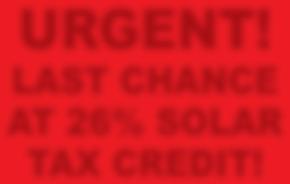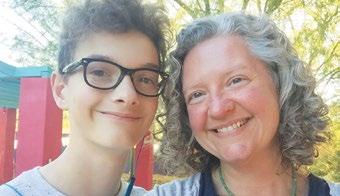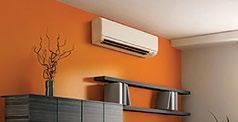
12 minute read
Family
Kids of All Ages Soak Up Fun and Learning at Hubbard Family Swim School
By Lila Baltman
Due to COVID-19, all the swim instructors at the Hubbard Family Swim School are now required to wear large, plastic face shields while teaching children in the swimming pools. However, even with face shields being worn, children can still see the instructors’ big smiles and friendly faces behind the see-through plastic shields. There may be several new safety measures being used, but parents are definitely excited to sign their babies and children up for swim lessons again and Hubbard is thrilled to be open and back in the “swim of things.”
Founded in 1998 by co-owners Bob and Kathy Hubbard - worldrenowned experts and educators in the field of infant swimming - Hubbard Family Swim School offers lessons to children 8 weeks to 12 years of age. The Hubbard’s basic philosophy is this: children everywhere must learn how to swim.
Hubbard’s new safety measures include:
• Face coverings are required for everyone over the age of 6 (except when in the water). • Families are asked to limit their swim entourage to one adult per family. • Enter the building no more than 10 minutes before your scheduled lesson. • Upon arrival, use the available hand sanitizer. • Practice social distancing and keep children close when they are not in a lesson. • Families are strongly encouraged to come and leave in swim gear to reduce the number of people in the changing area. • To reduce family crossover, makeups are not being offered at this time. The majority of children at Hubbard Swim School enroll in one 30-minute lesson per week. There are a variety of classes available for children ages 8 weeks to 12 years of age. In 2019, the American Academy of Pediatrics formally stated that they now recommend that children as young as 1 year old get enrolled in formal swim lessons.
There are also free “Baby Splash” classes for babies 8 weeks old to 5 months of age available at Hubbard. Parent participation in the water is required. These 30-minute water acclimation classes give parents or caregivers a chance to learn excellent tips on how to enjoy tub time at home with baby and also learn how to prepare baby for swim lessons. The baby splash classes are free but there is a $25 registration fee.
“Our popular Baby Splash classes give parents an excellent way to spend quality time with their babies in the water,” says Kathy Hubbard. “Their swim class together is wonderful bonding time.”
Hubbard in Phoenix is located at 13832 North 32nd Street, Suite 100, in the Kino Plaza. For more information, call 602-971-4044 or visit hubbardswim.com.
October NEW FAMILY SPECIAL!
Enroll for two months of Kinder, Recreation or Ninja Zone and get your 3rd month FREE! *Must call 602-549-2864 or bring in this ad to get offer.

Offer expires Oct. 31, 2020. Valid with new families only.
7812 N 12th St. Suite B. Phoenix 85020 | (12th Street/Northern) www.impactgymaz.com | 602-549-2864 Making an Impact on Children and Families for Life!

Cover Story Harness the Power of the Sun
Sunsolar Solutions Helps Locals To Go Solar And Save Big
By Michelle Talsma Everson
When you think of renewable energy, the first type that may come to mind is solar power. Solar energy works by capturing the sun’s energy and turning it into electricity through solar panels—and with an average of 300 days of sunshine a year— Phoenix is the perfect place for those considering supplementing some of their energy uses with solar power.
In fact, according to recent statistics, solar panel installations are expected to grow 20% in 2020, consolidating the United States’ position as the world’s second-largest market for solar power usage. Better still, according to a recent Zillow.com study, homes with solar sold at an average 4% higher than non-solar homes.
Michael O’Donnell, vice president of sales and co-owner of Sunsolar Solutions, says that his company has helped over 6,000 Arizona families go solar—taking the power of the sun and turning it into usable electricity to power their homes.
“We started in 2015 and are based right here in Phoenix. Since then, we have helped thousands to find custom solutions for their own needs to try to bring their power bill as close to zero as possible,” O’Donnell explains.
SunSolar Solutions recently moved into their new headquarters due to rapid growth.
O’Donnell compares having solar panels to someone “having their own personal power plant.” He notes that solar panels are often more affordable than people realize, with $0 down and options to purchase or lease the panels.
“It’s a zero upfront cost, monthly payments are usually less than you’re paying for electricity, and, in time, the equipment pays for itself, and you make a monthly profit,” he says.
“Your solar system allows you to generate your own clean power and costs less than your current utility company,” according to SunSolar Solutions. “Flexible finance solutions allow you to simply pay by the month, like you do now, but at a lower rate and you start saving immediately.”
How O’Donnell and the team at Sunsolar Solutions accomplish this is by meeting with each customer personally to assess how many panels their home will need.
“We are upfront and transparent with customers; we don’t sell fake savings and our engineers will make sure that the solar panels work like we say they will,” O’Donnell says. “From the time we first meet with a potential customer, it takes about 60 days until the panels are on the roof and their system is ready.”
Some benefits of going solar with Sunsolar Solutions include:
• Flexible financial solutions – locals can lease, finance or purchase solar panels • No upfront costs • Customers can save up to 95% off of their electric bill • Protection against inflation and energy cost increases from the electric company • Increasing the property value • Earning a great return on your investment • Going green • Providing clean, reliable energy
There are also several tax perks that come with going solar.
“By increasing the number of panels, you increase the amount of money that the U.S. government will be investing in the system and into your home,” O’Donnell explains. “If the 100-percent design created a $10,000 subsidy, then the 150-percent design will produce a $15,000 subsidy. There is no limit to the size of the system and, therefore, the size of the tax credit. By the way, the tax credit is dropping significantly at the end of this year from its current rate, which is 26 percent of the system price. Truth be told (which is something we insist on in our proposals), the result of a properly designed system is a lower monthly and annual cost for the household’s electricity.”
O’Donnell shares the story of one of his recent local customers: “Janet from Peoria will pay $33,000 less to pay off the equipment than she would have paid APS. And the money she did spend didn’t turn into utility receipts; it turned into a paid-off $40,000 power plant that at the end of the term will be generating $7,500 worth of electricity per year. She has no doubt whatsoever that her home will be worth substantially more with a paidoff solar system, producing enough power to incur zero billing from APS, than it would have if she had spent much more buying that power from APS over the years.”
In addition, for those with APS service, O’Donnell says that there may soon be a limit of 15 percent of their customers per neighborhood who are even allowed to have solar panels.
Val Berechet, president of SunSolar Solutions, is urging his sales force to emphasize the urgency of switching because of this limit. He has set up a geographic database that will track what areas are approaching capacity or have already exceeded their maximum, according to SunSolar Solutions.
Out of 17 applications submitted to TEP (a Tucson-based power company, similar to APS, used as an example), after the utility started implementing the maximum on May 12, four have already been denied, signaling possibly maxed-out service areas, Berechet explains. He expects other areas in Arizona to hit their maximum quickly, though it is too early to know where and when with any specificity, he adds.
“The essential environmental and economic factors still favor solar power in Arizona,” according to Sunsolar Solutions. The state has the third lowest cost per watt for solar panels, and it has the secondhighest potential solar resources, just after Nevada, according to the U.S. Energy Information Agency, cites the company.
O’Donnell shares that the cut off to go solar when you have APS could be as soon as the end of this month.
For those who choose to go solar with Sunsolar Solutions, O’Donnell explains that customers can see how much power the panels are generating every day through an easy-to-use app. “On days where there is a lot of sunshine, the panels perform even better,” he says.
Added to their knowledge and expertise, O’Donnell notes that SunSolar Solutions is A+ rated by the Better Business Bureau and has several high reviews on social media.
“Val, Michael, Jack and the whole team were extremely easy to work with,” shares one customer. “No pressure sales, answers to all my questions... and worked with me to develop a system that I wanted installed. My first complete month’s APS bill just came in and I am proud to say it was just 20.66.”
O’Donnell says that, for budget conscious consumers, going solar helps keep their same monthly payments years into the future— something that can’t be promised with traditional electric companies.
To learn more and inquire about a free consultation, visit sunsolarsolutions. com or call 602-773-6675.
Solar Must Be Installed by Dec 31st or Miss Out on 26% Tax Credit
Arizona Home Owners have until December 31, 2020 to have a solar system installed and be “Operational” to qualify for the Federal Investment Tax Credit (ITC). If the system is installed after that date the tax credit will drop to 22% in 2021 and 0% in 2022.
Is there still time for a solar project to be initiated and completed before the end of the year? According to Val Berechet, President of SunSolar Solutions, a local solar company with over 6500 customers in Arizona, it only takes one or two days to complete a solar installation. The issue is, it can take anywhere from 60 to 90 days from the point of getting a proposal to having the permit from the city and approvals from APS. So it is getting close to the point where that will become impossible to accomplish. To remove the uncertainty for their customers SunSolar Solutions will guarantee customers an installation in 2020 if they call for a proposal through October 2020.
In addition to the Federal ITC, the State of Arizona will issue a $1000 tax credit that can be applied to 2020 state taxes.
According to Solar Energy Industry Association (SEIA): If a homeowner buys the solar energy system outright (either paying cash or fi nancing with a loan), they cannot use any commence construction safe harbor provisions. To receive the full 26% residential solar tax credit, the system must be “placed in service” before the end of the day December 31, 2020. It is not enough to have signed a contract, or to have made a down payment or even to have begun construction. There is no bright-line test from the IRS on what constitutes “placed in service,” but the IRS has equated this with “completed installation” in a Private Letter Ruling. The residential credit is claimed on the tax return for the year in which the qualifying expenditures are incurred, and the tax rules say the costs are incurred when the system installation has been completed. The 25D tax credit will step down to 26% in 2020, 22% in 2021, and 0% starting in 2022.
If a homeowner buys a newly built home with solar and owns the system outright, the year that they move into the house sets their credit eligibility. Expenditures are generally treated as incurred when the original installation of the solar energy system is completed on an existing home. However, if a new solar energy system is purchased in connection with the new construction of a home, the costs are treated as incurred when the taxpayer begins living in the home.
QUICK FACTS
The ITC is a 26 percent tax credit for solar systems on residential (under Section 25D) and commercial (under Section 48) properties. The Section 48 commercial credit can be applied to both customer-sited commercial solar systems and large-scale utility solar farms.
The residential and commercial solar ITC has helped the U.S. solar industry grow by more than 10,000% percent since it was implemented in 2006, with an average annual growth of 50% over the last decade alone.
Congress passed a multi-year extension of the ITC in 2015.
A tax credit is a dollar-fordollar reduction in the income taxes that a person or company would otherwise pay the federal government. The ITC is based on the amount of investment in solar property. Both the residential and commercial ITC are equal to 26 percent of the basis that is invested in eligible solar property.
If you would like to receive a free proposal customized to your home’s roof and APS usage call Michael O’Donnell, VP of Sales at SunSolar Solutions at 602818-1355. Act now to ensure the installation in 2020 and receive the full 26% Federal ITC and the $1000 Arizona Tax Credit on this years taxes.
GO SOLAR




URGENT! 623-562-9004 LAST CHANCE 9059 W Lake Pleasant Pkwy H800 Peoria AZ 85382 AT 26% SOLAR Don’t Miss Out! Go Solar Today! www.SunsolarSolutions.com TAX CREDIT! • • $0 Down, No upfront cost Save up to 90% off your electric bill • Protect against infl ation & energy costs increases from your Utility Company Valid for new customers only. Not valid with any other offer. Call for details. Dexter and Jake love all the fun events hosted by Dogtopia! • Provide clean, reliable energy for your family powered by the sun










